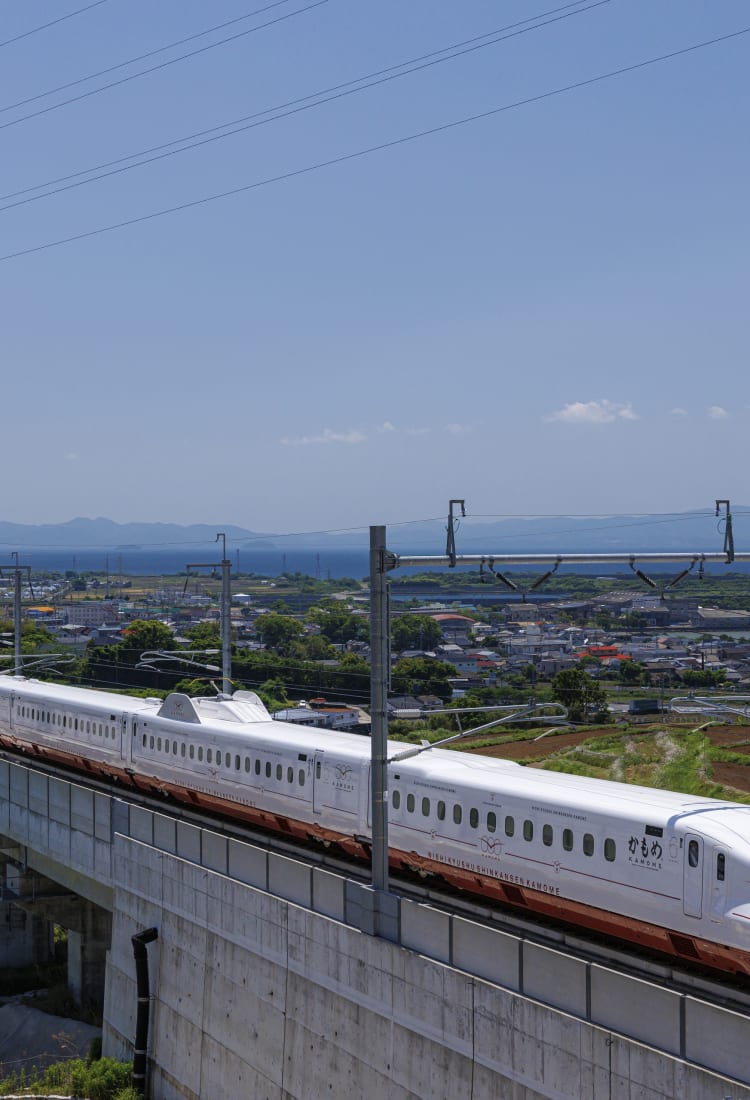
2022.09 West Kyushu Shinkansen: Explore Nagasaki and Saga Prefectures by Bullet Train in Style Introducing Kyushu, Japan’s southern island of intrigue
The Kyushu Shinkansen that takes passengers down through central Kyushu welcomes a new addition, the West Kyushu Shinkansen.
Photo credit: JR Kyushu
But now anyone who wishes to experience the undiscovered treasures of West Kyushu on Japan’s famous bullet train, or shinkansen, will be thrilled to know that a brand-new section opened in the fall of 2022.
West Kyushu Shinkansen: New access to a unique region of Japan
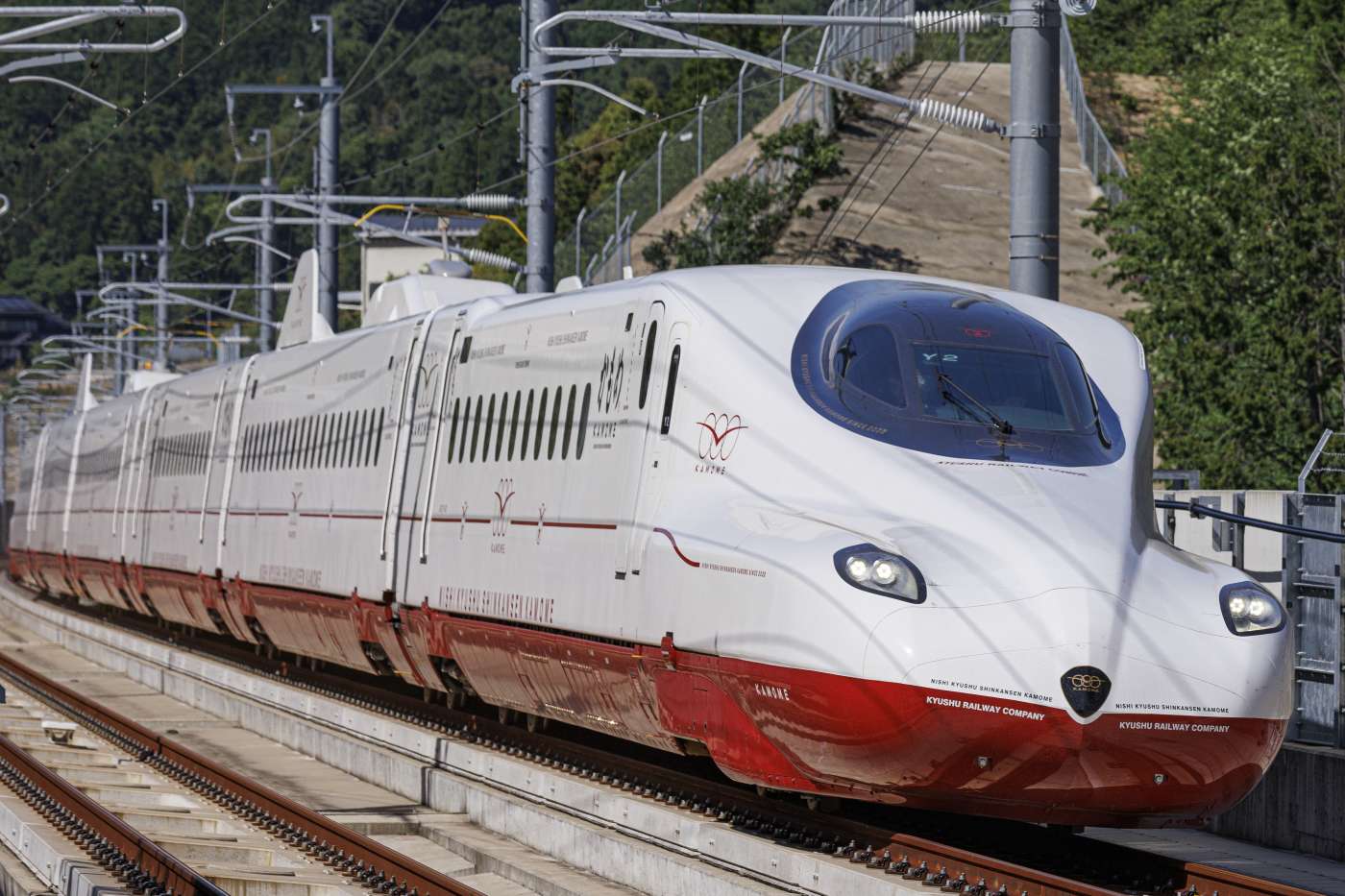
The new Kamome Shinkansen will take passengers through West Kyushu to Nagasaki.
Photo credit: JR Kyushu
Previously, there was only one Kyushu shinkansen line, running from Hakata Station in Fukuoka Prefecture down the center of Kyushu to Kagoshima-Chuo Station in Kagoshima Prefecture, missing Kyushu’s west. But as of fall 2022, the West Kyushu Shinkansen inherited the name Kamome (seagull in Japanese) from its preceding limited express trains and takes visitors on a smooth voyage to beautiful Nagasaki.
The new service comprises five stations for this new 67 km-long line: Takeo Onsen and Ureshino Onsen in Saga Prefecture, and Shin-Omura, Isahaya and Nagasaki in Nagasaki Prefecture. Thanks to the new service, what was once a two-hour train ride from Takeo Onsen to Nagasaki will only take around 30 minutes! Train enthusiasts will be excited by Kamome’s aerodynamic dual supreme wing design and lower energy consumption, and everyone can enjoy its stylish red and white coloring with gold highlights.
The train interior features two different designs for reserved and non-reserved seats, blending a mix of Japanese and Western tastes with a combination of modern and classic styles. Luggage racks near the entrances of all carriages give passengers the convenience of being able to spread out and relax, and outlets provided at all seats are available to charge mobile devices or laptops. The train also has wheelchair accessible spaces and accessible restrooms to accommodate all riders.
Travelers from overseas will be pleased to know that this line is included on the Japan Rail Pass or JR Kyushu Rail Pass, so they can save both time and money using the new Kamome Shinkansen.
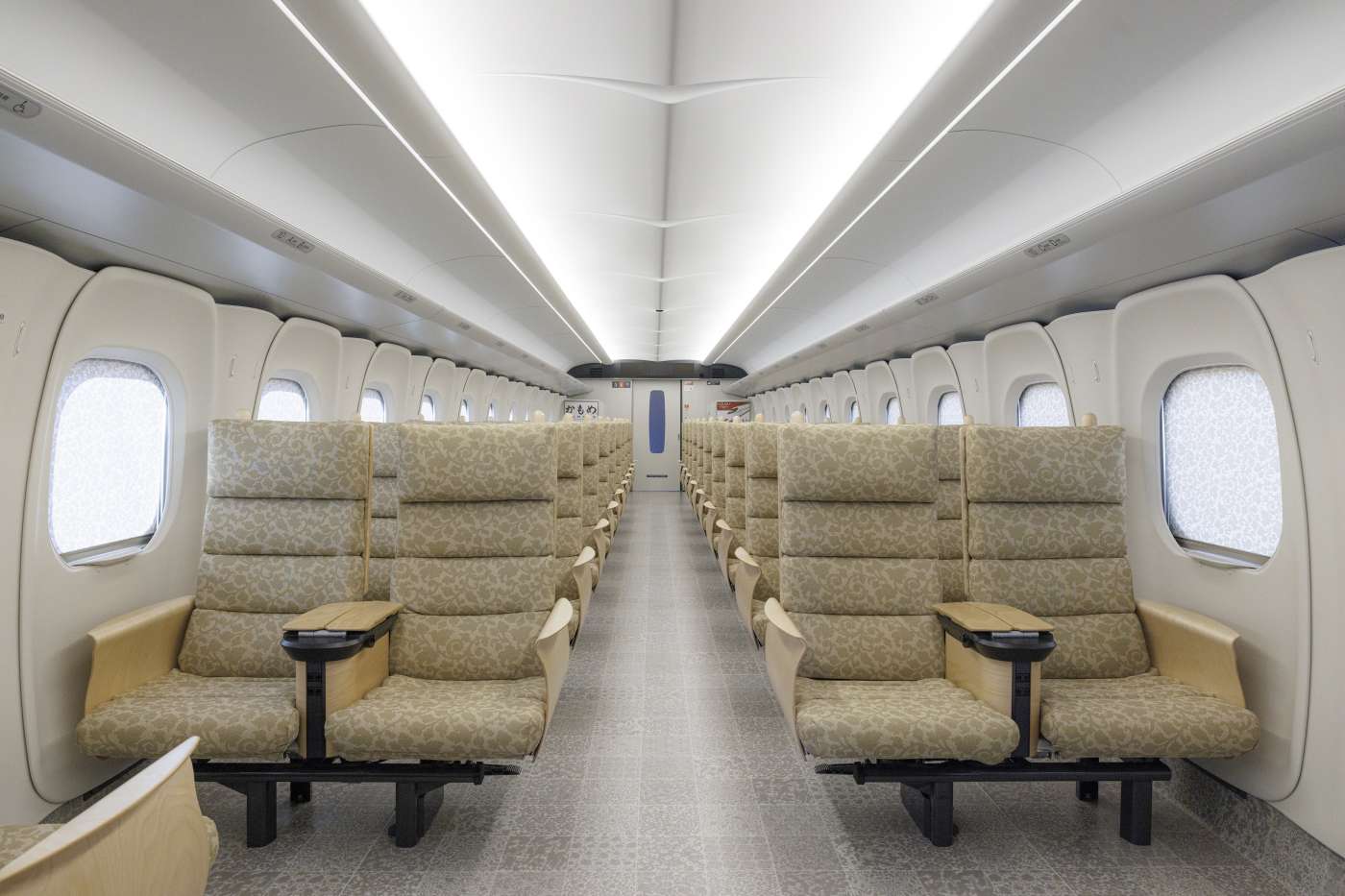
This reserved seat car features spacious yet elegantly embroidered chairs.
Photo credit: JR Kyushu
Saga Prefecture: Rare and enchanting rural discoveries
As many parts of Kyushu are famous for their restorative hot spring waters, it comes as no surprise that the two stops on the West Kyushu Shinkansen service are in Saga Prefecture and are famous for being hot spring destinations.
The first is Takeo Onsen Station. From here, it’s a short walk to the eye-catching Takeo Onsen Tower Gate, which is the symbol of the hot spring district. The tower was designed in 1915 by Saga-born architect Dr. Kingo Tatsuno, who also designed the Marunouchi-facing side of Tokyo Station. The latter building features eight reliefs of the twelve zodiac animals, and had many people wondering where the other four went. The mystery came to light in the tower gate where you can still see the remaining four representing north, south, east and west as you walk through the second floor.
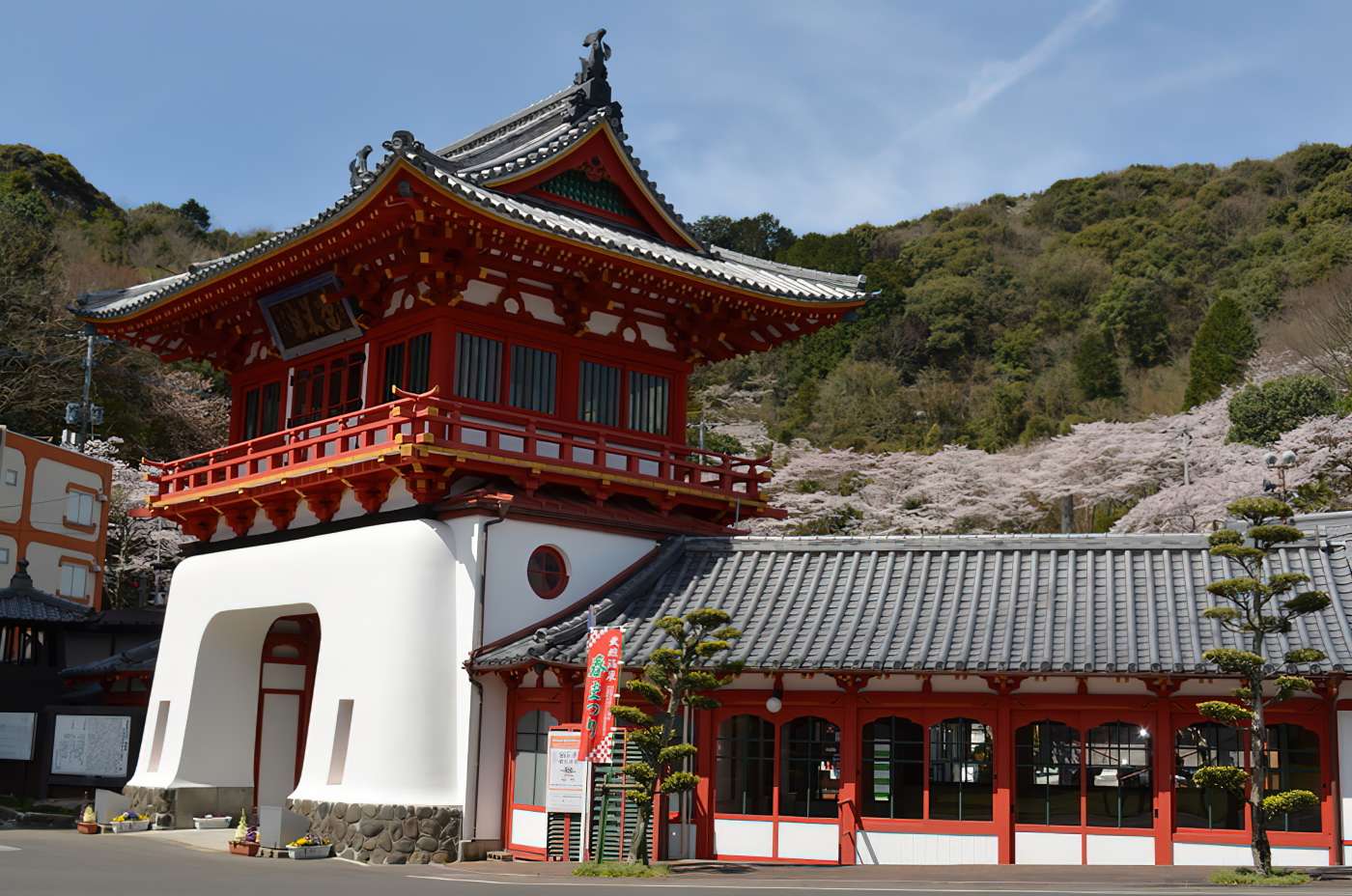
Try to find the four zodiac carvings on the second floor of Takeo Onsen Tower Gate.
Photo credit: Saga Prefectural Tourism Federation
A soak in the hot springs of Takeo Onsen is perfect before or after a stroll around Mifuneyama Rakuen – a massive park with beautiful flowers and installations – or Takeo Jinja, a shrine home to a 3,000 year-old sacred tree. The park also holds many illumination and projection-mapping events that are well worth witnessing.
Next on the shinkansen service is Ureshino Onsen. Prior to the opening of the new bullet train, this hot spring town was only accessible by bus. The waters here and at Takeo Onsen are considered to be particularly healing thanks to their high alkaline levels and sodium bicarbonate content. They’re called “bihada-no-yu” (skin-beautifying waters) and leave the skin feeling silky smooth. Green tea has also been a specialty of Ureshino since 1440, when it was brought over from China and first cultivated. Some onsen have even combined their waters with green tea extract for further enhanced health benefits.
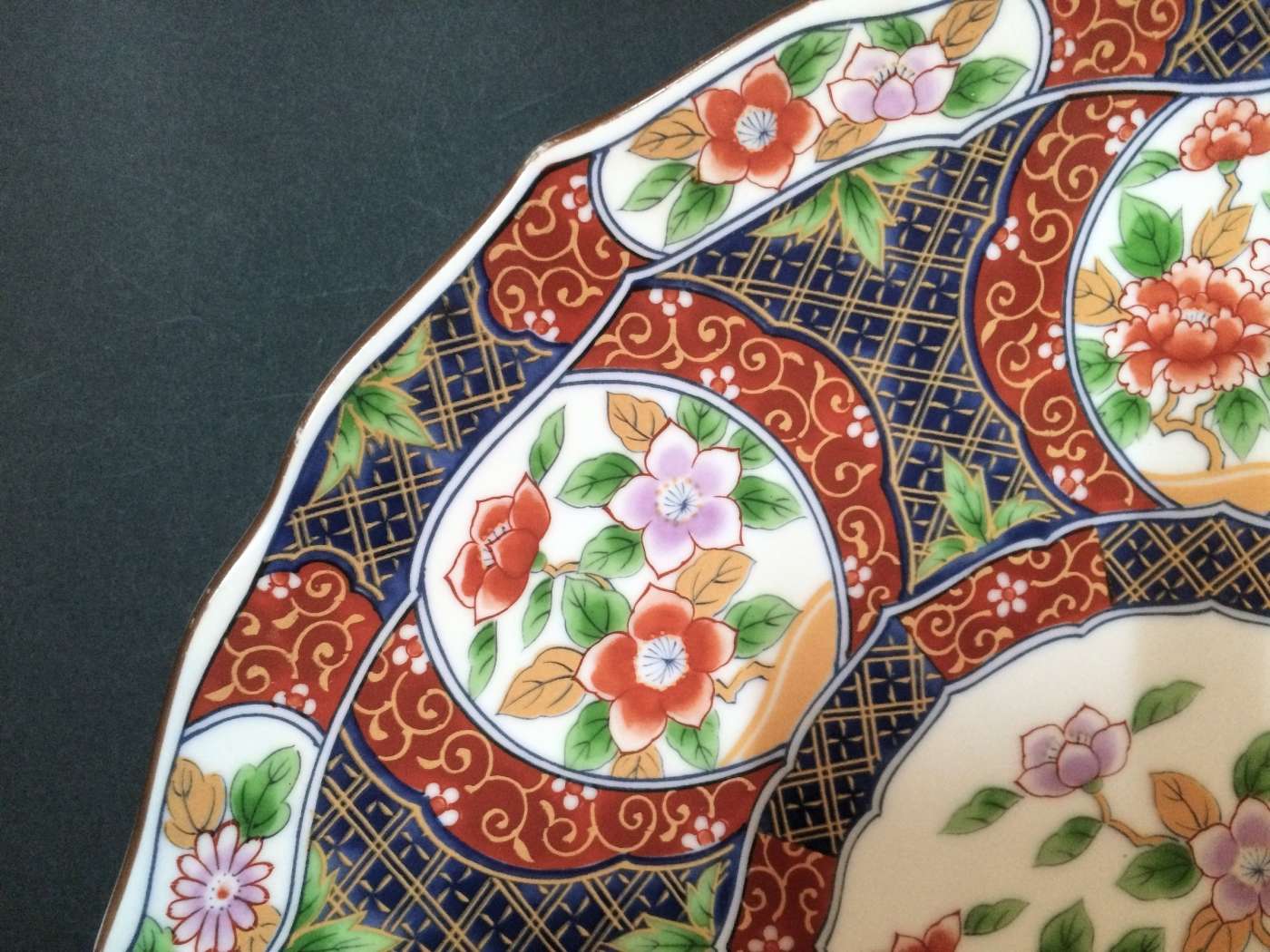
With over 400 years of history, Arita porcelain has influenced ceramic-making around the world.
If you have the chance to venture further out into Saga Prefecture, cities such as Karatsu, Arita and Imari will interest pottery enthusiasts. Arita, in particular, is considered the birthplace of Japan’s porcelain tradition. The town is filled with pottery-related attractions, but Arita Será is notable as a large, modern shopping mall with 22 shops specializing in pottery. The mall also hosts an annual pottery festival.
Nagasaki Prefecture: A city of deep history and cultural exchange
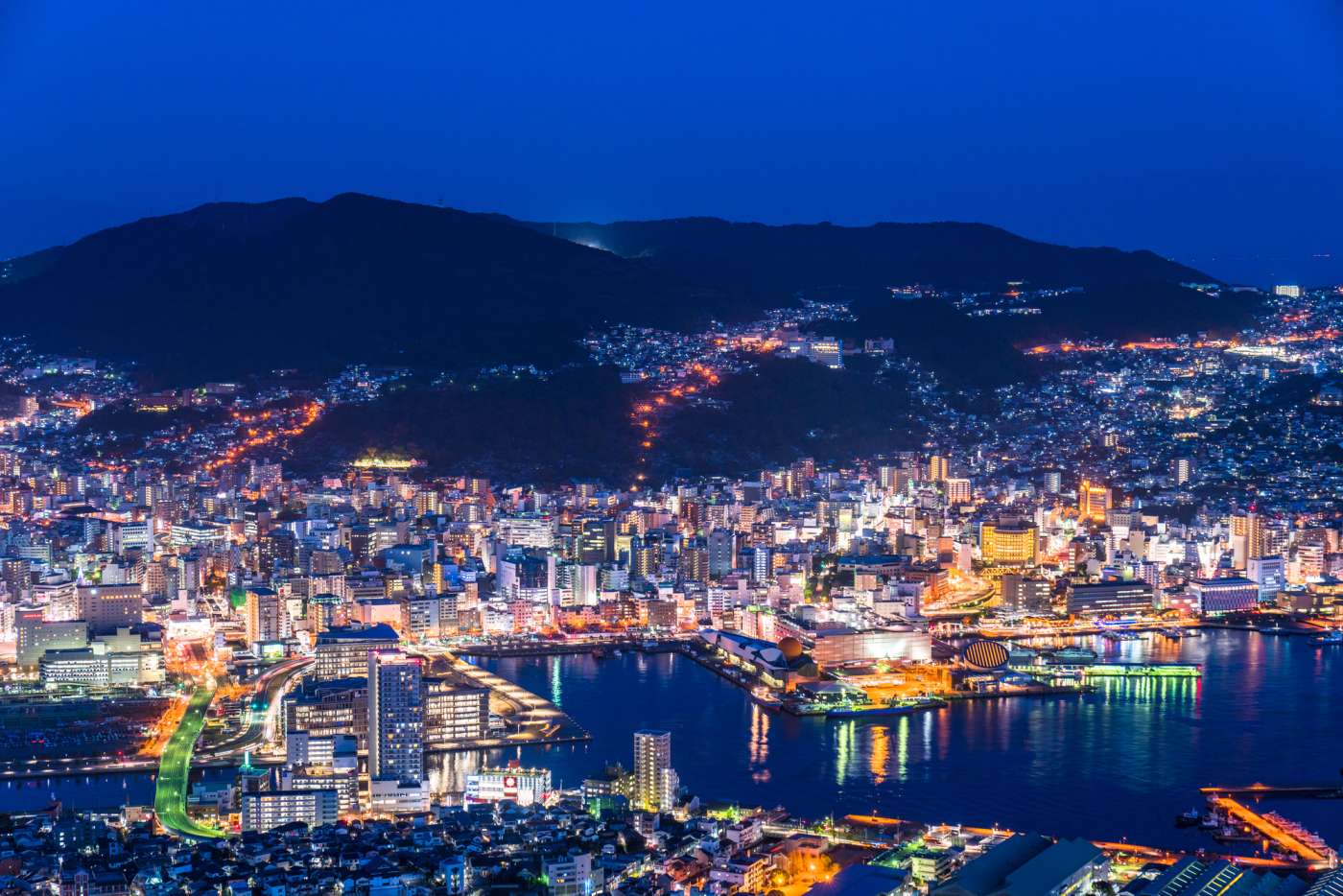
The lights of Nagasaki are particularly stunning, and are ranked as one of the world’s new top three night views.
The West Kyushu Shinkansen continues on, entering Nagasaki Prefecture. For hundreds of years, Nagasaki was the only major port open to foreign countries, and their influence can be seen in the region’s food, culture and architecture.
The bullet train stops at Shin-Omura Station in Omura. Omura city has a long history dating back to the 10th century with many of its traditions tracing back to times of war. It has three unique dances, Suko Odori, Okita Odori and Kuromaru Odori, created to celebrate the victorious return of a feudal lord. For the same celebration, a special type of layered sushi cut into squares, called Omurazushi, was made. You can experience them at annually held festivals in the city. You can also visit Kushima Castle and the park that has been built over the outer moat. Omura Park is home to over 300 blossoming cherry blossoms, and is considered one of Japan’s Top 100 Cherry Blossom Spots.
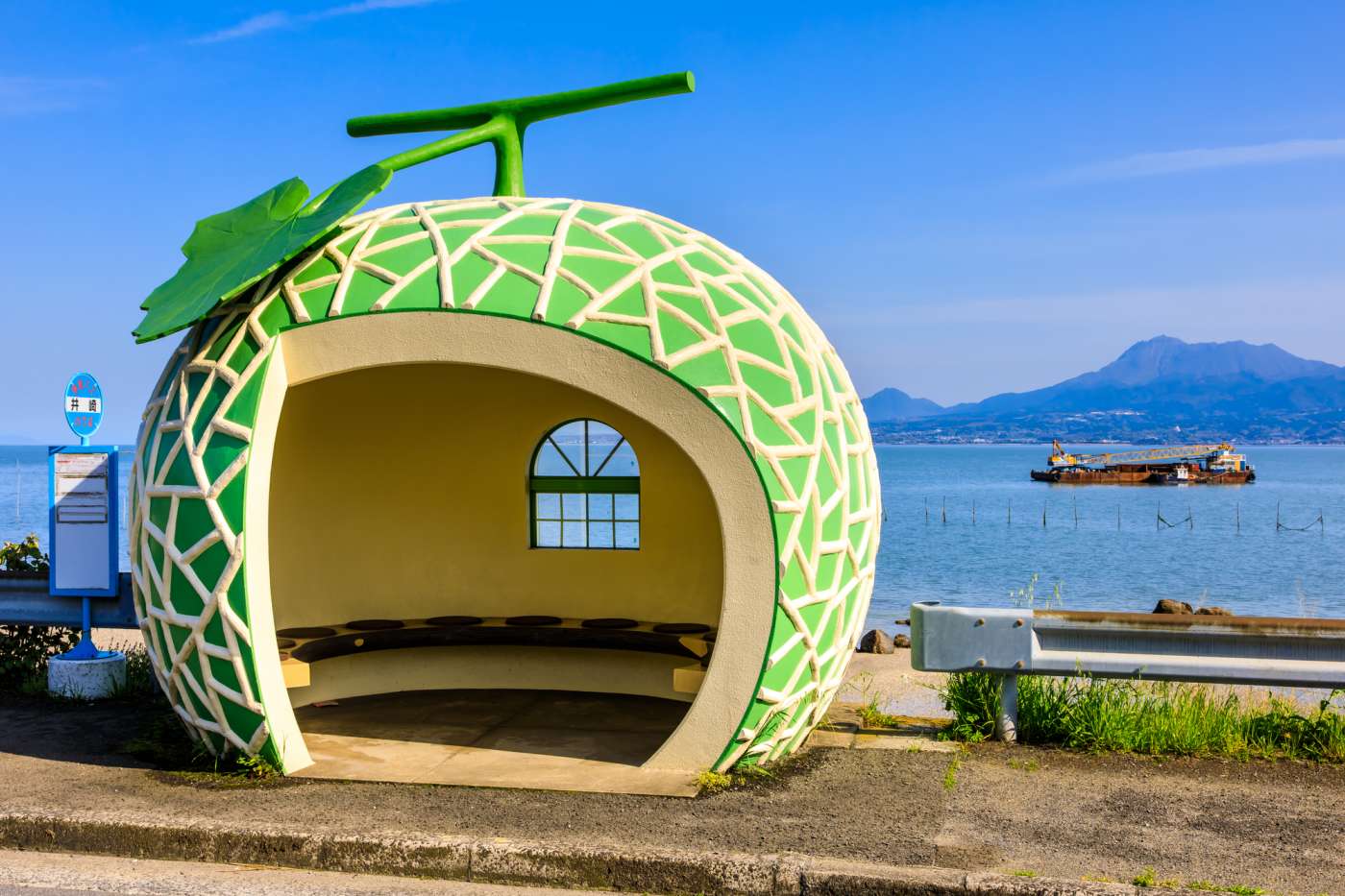
What could be better than waiting for a bus in a melon-shaped bus stop?
A little ways off from the next stop, Isahaya Station, are the most delicious looking bus stops you’ll ever see! Here there are 16 giant fruit-shaped bus shelters, brightly colored with windows providing views of the beautiful surrounding scenery. The area of the highway these shelters are located on is now called Tokimeki Fruit-shaped Bus Stop Avenue.
Last, but certainly not least, at the end of the line lies Nagasaki. While its name is known to many visitors to Japan, not many make their way down to it. Outside influence has ingrained itself in Nagasaki culture over the hundreds of years of trade. This is prevalent in food including the local specialty castella cake, a firmer version of sponge cake that has influences from Spain, but was actually brought to Nagasaki by Portuguese traders.
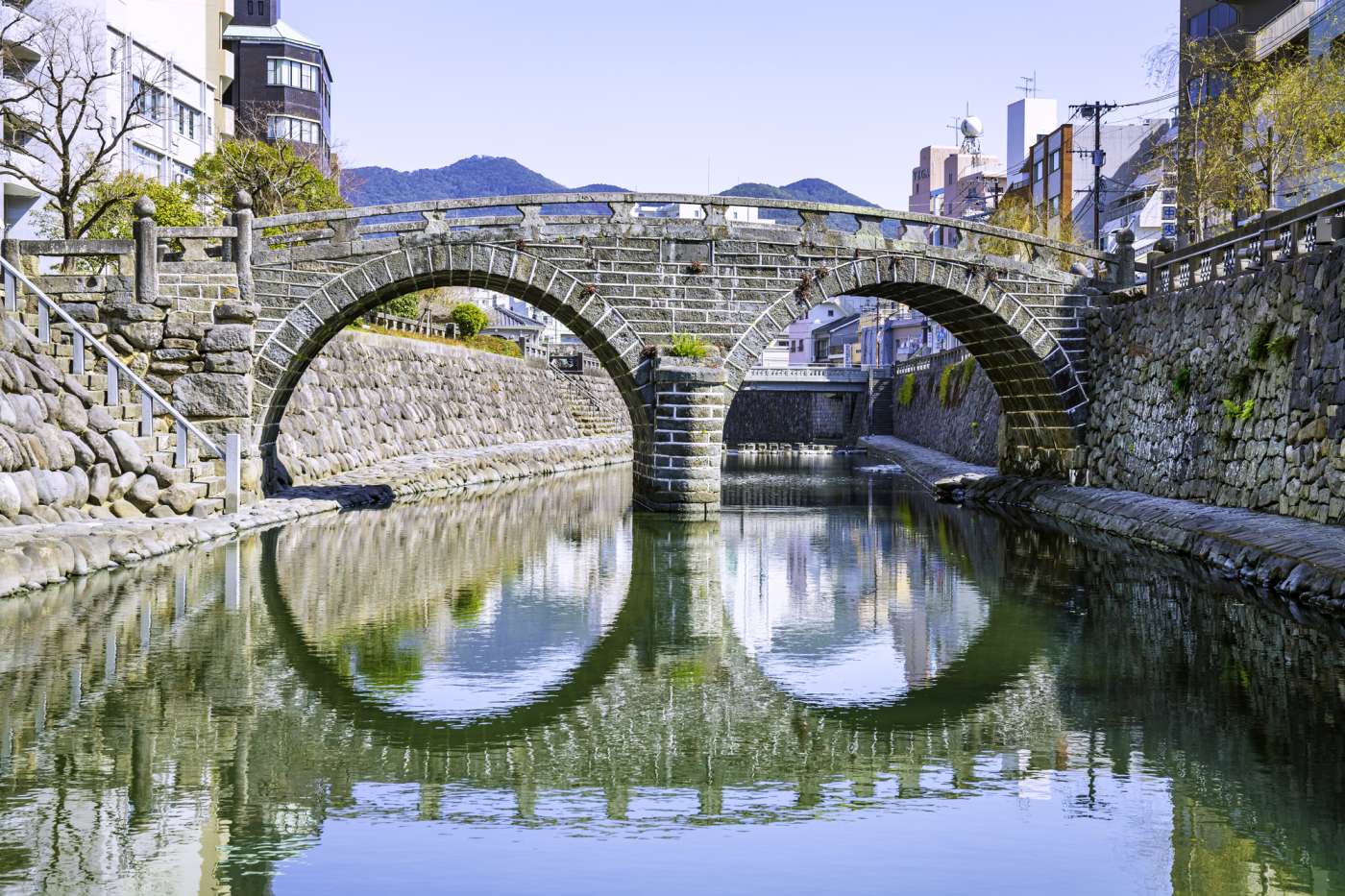
Look closely and you’ll see a pair of glasses staring at you.
You can stroll along the banks of the Nakashima River until you see Meganebashi, or Spectacles Bridge. This photogenic bridge was constructed in 1634, and from the right angle, its arches reflect in the river below to create the illusion of a pair of huge stone glasses. Models of the method that was used to create the bridge are on display in the Nagasaki Museum of History and Culture. Be sure to look closely at the stone walls lining the river as well because you might just find special heart-shaped stones hidden in them. It is said that you’ll be blessed with good luck, happiness and eternal love if you do.
There is still much more to explore in West Kyushu, such as the gorgeous sunset scenery at Hamanoura Tanada or Yayoi Period history at Yoshinogari Historical Park, and it’s now more accessible than ever thanks to the opening of the West Kyushu Shinkansen service. The new bullet train line provides faster, smoother access to a side of Japan that many have yet to explore.
Business hours
Due to measures to prevent the spread of COVID-19, business hours may be subject to change; please check with the venues before visiting.
Information
JR Kyushu |




















































